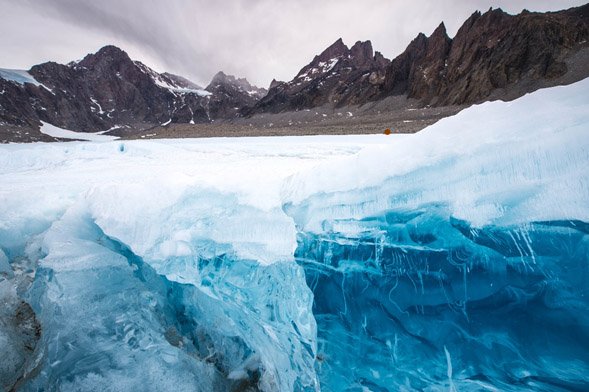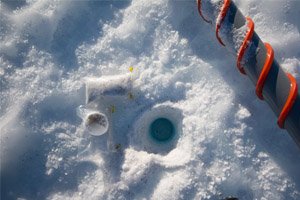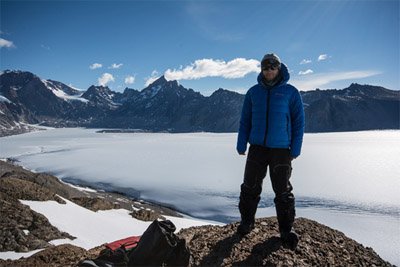Our remote study site “Lake Untersee Oasis” was first discovered during an aerial survey in 1938 by a German Antarctic expedition and 31 years later the first humans reached the shoreline of Lake Untersee that is embedded in this oasis. The scientific interest in this ultra-oligotrophic lake has gradually grown since the late 1980s and led to interdisciplinary research projects, expanding the knowledge of a peculiar lake ecosystem.
Lake Untersee has a 169m deep basin adjacent to the Anuchin Glacier which dams the lake at its northern end. Here, the pH reaches values up to 12 and pigmented microbial mats were found at the deepest point, indicating the extreme transparency of the lake. In shallower waters, modern large conical stromatolites unique to Lake Untersee and other benthic microbial mats were discovered. Further, in a smaller anoxic sub-basin at the southern side of the lake, high methane concentrations build up due to methanogenesis in surface sediments and the water column.
Compared to other ice-covered lakes of Antarctica, water-loss of Lake Untersee only occurs through sublimation of the perennial lake ice cover. Ablation during the austral summer is compensated by refreezing of lake water at the bottom of the ice cover during the winter months. This process completely disconnected the lake from the atmosphere for at least 500 years.

Since polar environments such as Lake Untersee Oasis have mostly been dealt with on a solitary basis, linkages between the well-studied lake ecosystem with that of surrounding soils, bioaerosols and the Anuchin Glacier are unknown. Therefore, we have considered the glacier as a vector in a biological sense that shuttles microbes and nutrients into the lake and hence may play a crucial role in the inoculation process for the lake ecosystem. Further, we have characterized microbial communities in supraglacial habitats of the Anuchin Glacier for the first time, compared them with those from the lake and applied a source tracking algorithm.

Results from our source tracking analysis indicate that biota in cryoconite holes (mini-lakes found on glacier surfaces) are an important inoculation source for the lake. This is rather surprising due to their low volumetric fraction to the annual glacial melt volume and requires furthers investigation.
In another follow-up study, we investigate the heterogeneity of microbial communities within the glacier ice surface. Water isotope ratios and satellite-based measurements indicate that that there exist three distinct ice sources that ultimately led to the formation of the Anuchin Glacier, suggesting that precipitation and subsequent ice formation of today’s glacier surface happened in spatially separated areas. Hence, we hypothesize the spatial differences during ice formation are also mirrored in the microbial community composition. I am looking forward to sharing these upcoming results in another blog entry.
Klemens Weisleitner, MSc
Research Group: Lake and Glacier Ecology
Klemens.Weisleitner@student.uibk.ac.at

